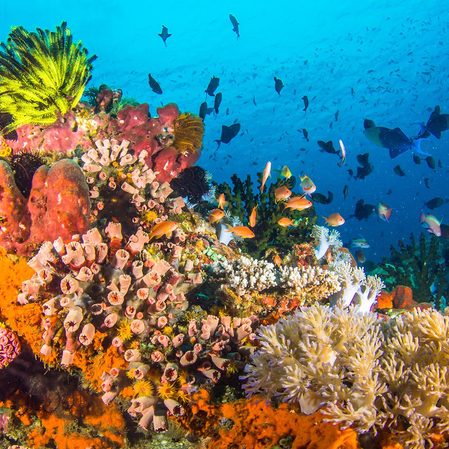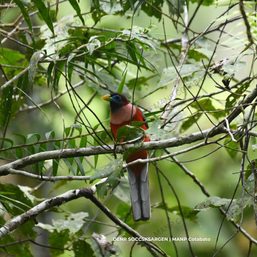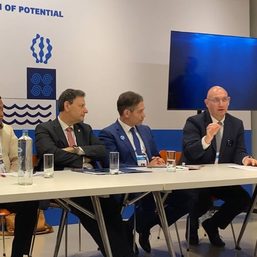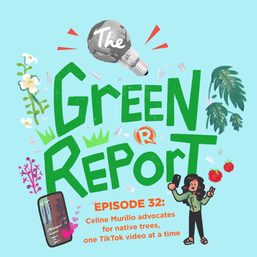SUMMARY
This is AI generated summarization, which may have errors. For context, always refer to the full article.
![[OPINION] Our seas, our future: Appreciating the PH’s ocean economy](https://www.rappler.com/tachyon/2021/09/marine-issues-September-16-2021.jpg)
“He who has command of the sea has command of everything.”
– Themistocles, Athenian admiral, victor of the Battle of Salamis Sea against the bigger Persian fleet, 480 BCE
I read Rachel Carson’s The Sea Around Us (Oxford University Press, 1951) sometime in 1963. It was my first book to read on seas. It was among the trunk of books that two US Peace Corp volunteers brought with them when they first came to our small Mindanao town early that year and temporarily stayed with my family before they found permanent housing for themselves. I recall it to be a big book with many fascinating pictures of marine life and scenery.
I’ve since learned a bit more about seas. Here’s a little of what I know now:
Regulating climate
Seas cover some 71% of the Earth’s surface. They play a large role in regulating our global climate. As humanity’s “carbon culture” expanded and intensified since about mid-19th century, carbon emissions into the air have been increasing and had caused much carbon build-up in our atmosphere. This warmed our planet and increased its average surface heat now fast approaching 1.50 C from 1850-1900 levels. This warming has been associated with rising frequency and intensities of extreme weather events and many other calamitous events: bigger wildfires, widening water scarcity, more severe constraints on agriculture, and pandemics.
Seas and the organisms they host help cool the earth by absorbing and locking up large amounts (about 30%) of global carbon emissions. Marine sediments and sedimentary rocks lock up some 66-100 million billion metric tons (BMT) of carbon. Ocean ecosystems store another 38-40 thousand BMT. Of these, seagrasses store some 10-18%, or twice per square miles than terrestrial forests. Plankters combine calcium, carbon, and oxygen into CACO3 that form the shells and exoskeletons of many marine organisms. In comparison, terrestrial plants absorb and store only 540-610 BMT. Soil organic matter store about 1.5-1.6 thousand BMT. Fossil fuel deposits store 4,000 BMT and the atmosphere a mere 7 BMT. It seems that the carbon absorption and storage capacities of seas are much higher than land, and so they’re more crucial than land in moderating the escalating climate crisis.
Supporting life
Seas support life. Seagrasses, plankters, and phytoplankters produce 70% of the Earth’s oxygen, much more than tropical forests and other biomes. Philippine coral reefs have been dubbed “the Amazon of the Sea,” which stresses their importance to supporting life systems. Much of what allows us to breath and survive apparently come from our seas.
Globally, there are more kinds of macroscopic life found on land (80%) than in seas (15%; the other 5% in freshwater). But in the Philippines, it appears to be the other way around. I find it hard to pin down the data, exactly, but as best as I could get from reports, it is estimated that we may have some 53,000 macroscopic species on record (this could change because new species continue to be found in the country). About 11,000 of these species are on land. But our seas host at least 15,000 species. Some others are found in our freshwater bodies. Some think that the estimates on our marine species might be much lower than actual, but already their diversity in our country is among the highest in the world. With seven times more water surface than land, Philippine seas support more life forms than are found in our lands.
Supporting livelihoods
Many Filipinos earn from sea-based jobs inside and outside the country. About 1.9 million were estimated to be dependent on fishing for income in 2019. They helped secure the food and nutritional supply of some 60% of the Philippine population, who were estimated in 2017 to be dependent on fisheries for food and protein, consuming an average of 40 kg/year/person. Sea-based overseas workers totaled 378,072 in 2017 and remitted to the country $6.5 billion in 2019. It was estimated that in value terms, fishery harvests in the country was P244 billion in 2017, and increased to P282 billion in 2019. Destroying our marine ecosystems would clearly threaten food and nutrition security for many Filipinos, especially those hardly able to afford higher priced substitute protein sources.
Marine biodiversity is of considerable value to us Filipinos and our economy. Our country’s vast marine genetic library alone poses potentially high value in the global biotechnology industry. Marine biodiversity has been surveyed, prospected, and assayed for genetic information that provide the basis for developing pharmaceuticals, bioremediation compounds, and energy. It might be noted that the global biotechnology market is large: it was estimated to be $447.92 billion in 2019 and expected to reach $833.34 billion by 2027. It could soar to $244 trillion the following year in 2028. Other countries may have the technology, but we have the biology. Destroying our marine biodiversity could mean us losing huge natural capital that could give us a big edge in the emerging and highly lucrative global modern biotechnology industry.
The value of coastal and marine resources in the Philippines was estimated in 2016 to be about P75 trillion (or some $1,500 billion). That was higher than the country’s GDP that year, which was pegged at $318.6 billion. This did not include two ecosystem services of coastal biodiversity: “blue carbon” (with an estimated value of $8.4 billion) and coastal protection (with an estimated value of $1.8 billion). While some question if these estimates aren’t too high, they seem significant enough as to be simply dismissed and disregarded. To the extent true, it appears that failure to properly consider the value of the natural wealth in our seas when pursuing different development and investment options could mean grossly (and perhaps criminally?) disadvantaging the country and the Filipino people.
My take
Being a land-domiciling society, we humans tend to see land as the principal platform for our progress. We don’t see the sea as an ecosystem of great possibilities for us. But especially in an archipelagic (mostly sea) country like ours, the value of our seas – for our survival, life, and livelihoods — indicates an “ocean economy” of vast potentials for ourselves and our future. Unfortunately, these potentials (and what could be our “bluer future”) are yet to be better and more fully appreciated among us Filipinos. They’re still too opaque to those among us who are hung up with the usual land-focused development and investments and, yes, to those long advantaged by land-oriented politics and wealth-making. (We are seeing this again in the proposed 174-hectare off-shore reclamation project in Dumaguete City.)
Themistocles could be right: control of the sea controls everything, because life is everything and the future of the world and of our country – our ecology and our economy – is in our seas. – Rappler.com
Ben S. Malayang III is Professor Emeritus, Silliman University Institute of Environmental and Marine Sciences, and Vice Chair of the Foundation for Philippine Environment. He served as Silliman University President in 2006-2018 and as DENR Undersecretary in 1992-1995. References can be provided upon request to bensmalayangiii@su.edu.ph or beniiim@icloud.com.
Add a comment
How does this make you feel?











There are no comments yet. Add your comment to start the conversation.